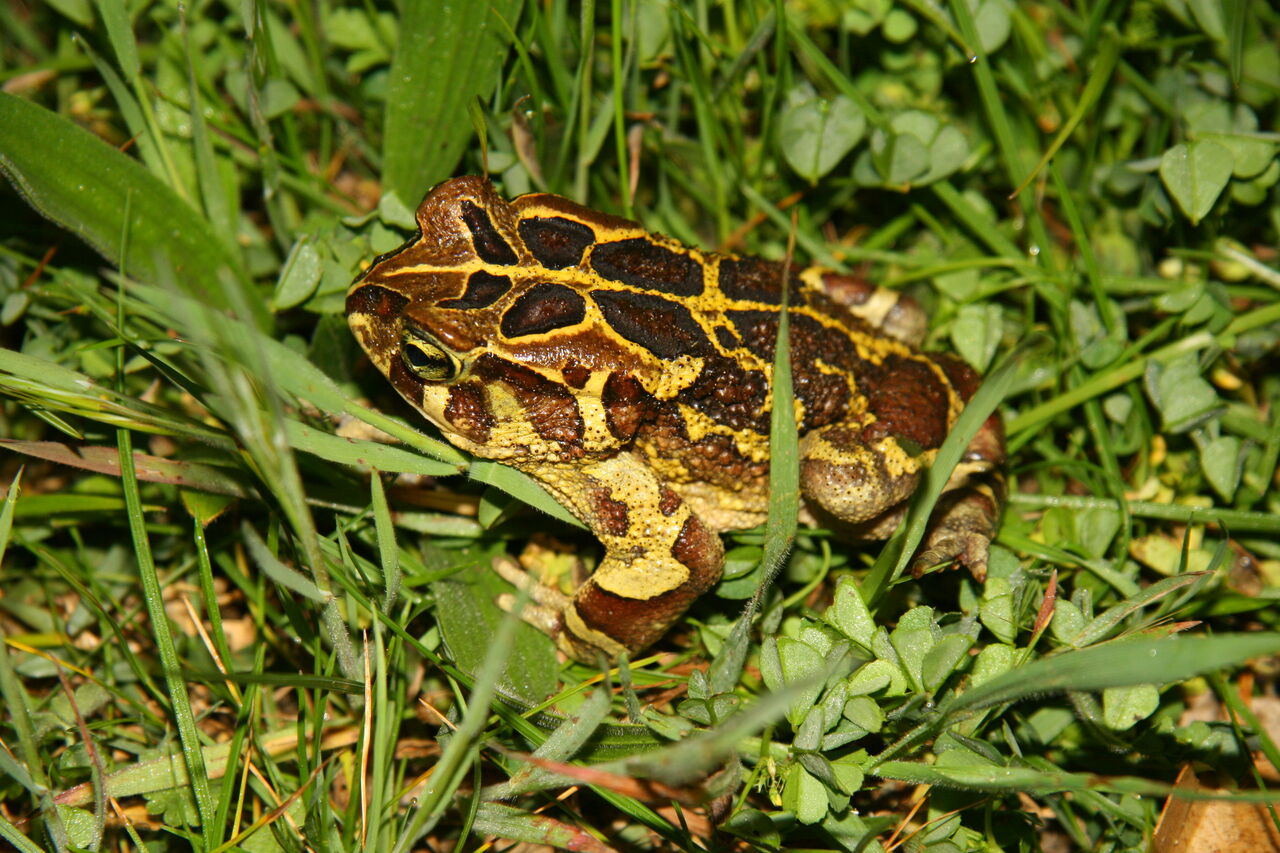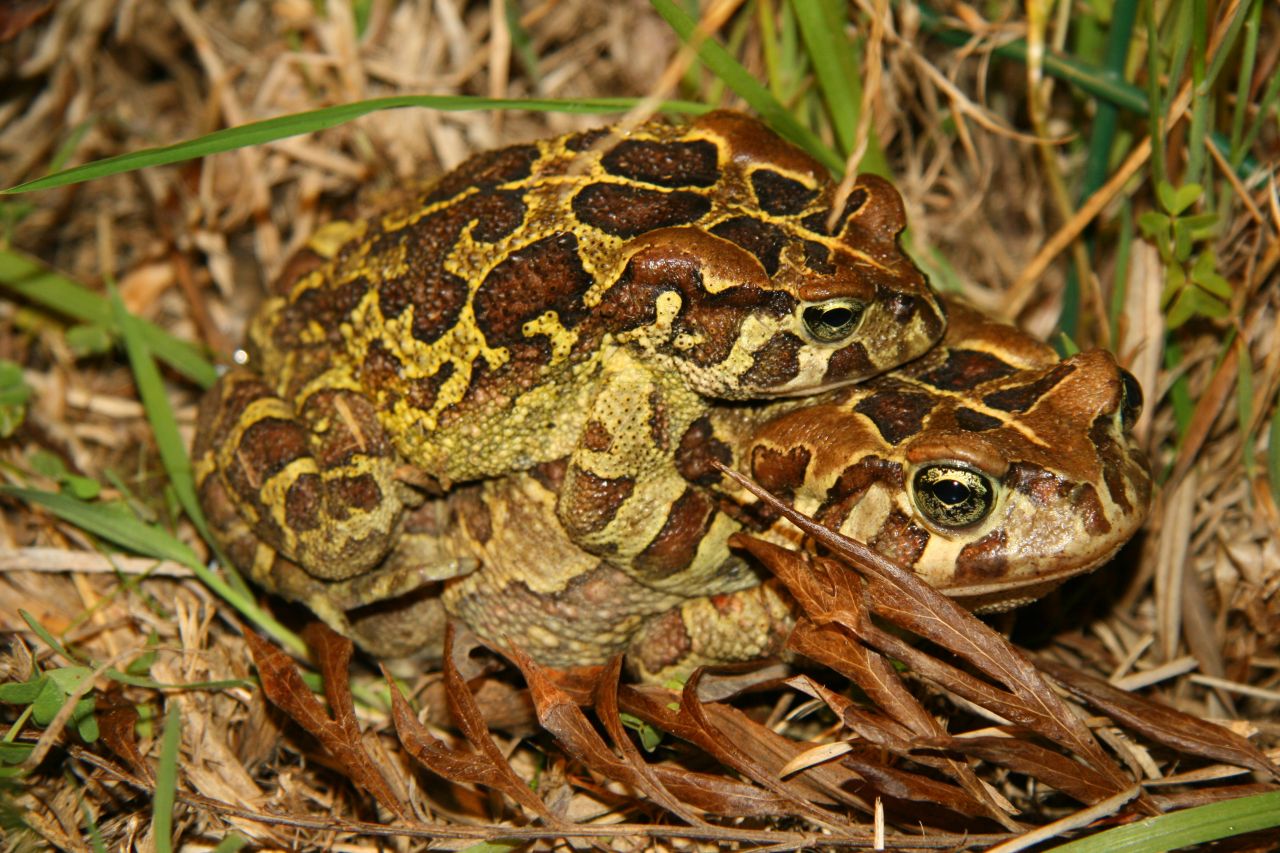Get a toad of this: Everything you should know about the Western leopard toad

The Western leopard toad (Sclerophrys pantherina) is one of the coolest amphibians. They’re endemic to the Western Cape, which means our province is the only place in the world where you’ll find these toads.
Their name is also derived from their leopard-like pattern: chocolate to reddish-brown patches over bright yellow skin, usually with a yellow stripe running down the back. Males have darker throats than females and are much smaller than the females. Both males and females have large eyes with horizontally oval pupils.
What is a day in the life of a Western leopard toad?
Western leopard toads live in sandy coastal lowlands, valleys, and mountain slopes. They spend a fair amount of time away from water, but never stray more than a few kilometres from their breeding grounds.
These sturdy toads love eating insects, snails, and worms – they make excellent pest controllers, so welcome them if you see one in your back garden! The Western leopard toad uses camouflage to blend into its environment. They prefer sheltered areas with lots of foliage and cover to hide from predators.

Not just a pair of pretty eyes…
Western leopard toads have some of the prettiest eyes in the amphibian world! They have greenish-gold, almost metallic, hues. But their eyes are also perfectly adapted to life as a prey animal. Their horizontal, slit-shaped pupils create sharp images of their environment. This gives these Western leopard toads a panoramic view, allowing them to detect predators and maintain forward movement over uneven terrain.
Their eyes also rotate in their heads as they move, so the pupils always remain parallel to the ground. No matter where the toad’s head is pointed, the eyes will always maintain their panoramic viewpoint.
A toad orchestra means it’s breeding time.
Breeding times often coincide with a symphony (or cacophony, depending on your love of toad sounds). Western leopard toads are most active from late July to September, especially in August, when they congregate in water bodies to breed. These watery breeding grounds range from slow-moving rivers, pans, dams, wetlands, and lakes. All have waters more than 50 centimetres deep. Male Western leopard toads use a deep snoring call to attract females. While mating, the female lays thousands of eggs in gelatinous strings, which the male fertilises as they are released.
Metamorphosis (the development of fertilised eggs into tadpoles and then baby toads) takes more than two months. Then, from October to December, the tiny toadlets leave the water in the thousands to begin their lives.

Threats to the Western leopard toad
Unfortunately, the breeding season for Western leopard toads often coincides with many of them being killed. Often, they must pass through gardens, pavements, and roads to arrive safely at their watery breeding grounds. As a result, many are killed or gravely injured by traffic, pets, or being trapped in swimming pools.
Particularly in the breeding season (July to September) and when the young toads are making their way from the water to land, it’s important to keep your eyes open for Western leopard toads on the roads. Please brake for the toads! If you see a toad on the road, please pick it up and put it on the other side of the road, facing the same direction it was going.
Why are Western leopard toads important?
Frogs and toads are known as indicator species: their health reflects the health of their ecosystem. Because they breathe through their skins, they are highly susceptible to toxins and poisons in water and air. So, if frogs and toads are dying, we should worry about the state of our environment. The threat of extinction facing these creatures should compel us to take a closer look at what we are doing to our environment and how our actions impact nature. Ultimately, if the frogs are dying, it means we are dying.
The future of frogs is in our hands! Save a frog, save yourself.

Related News
Sign up to our Newsletter
Receive monthly news, online courses and conservation programmes.


